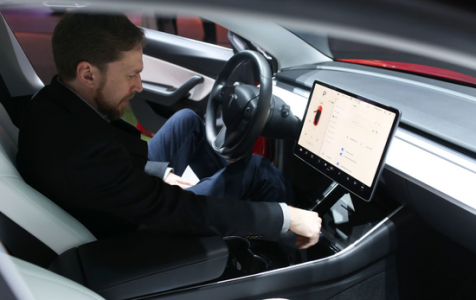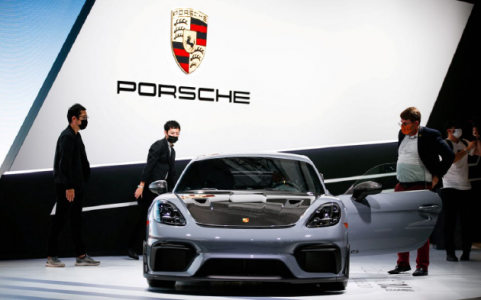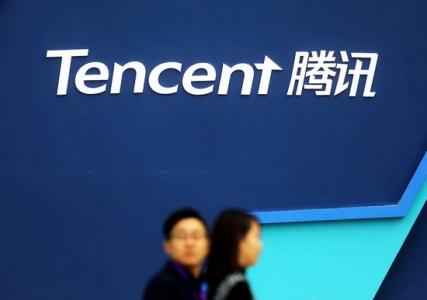your current location is:Home > Finance > depthHomedepth
Tesla electric heavy truck finally put into production, Musk dare not wait any longer
After 5 years of debut, Tesla's pure electric truck Semi Truck (hereinafter referred to as Semi) is finally going into production.
On October 6, Musk tweeted that the Semi would be delivered to Pepsi on December 1 this year. In PepsiCo's California factory campus, there are already several Tesla Megacharger charging stations waiting for the first batch of 15 Semi trucks to arrive.
At the launch of the new car in November 2017, Musk jumped out of a Semi car and introduced the world to Tesla's largest product in history: a semi-trailer electric heavy-duty truck with a maximum load of 80,000 pounds (about 36 tons). ), a top speed of 65 mph (105 km) under full load, and a range of 300 miles (480 km) or 500 miles (800 km), while the Megacharger charging station allows the Semi to reach a range of 400 miles (645 km) after a 30-minute charge.
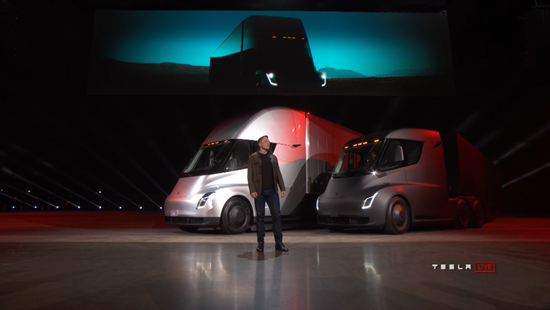
The Semi's debut immediately caught the attention of Tesla's first foray into commercial trucks, and - as Musk has always done - wants to be a blockbuster in the space.
You must know that although there were pioneers of pure electric trucks at that time, the cruising range was generally short. For example, Cummins' pure electric heavy-duty truck concept car AEOS had a cruising range of 160 kilometers; global truck giant Daimler's pure electric concept car Urban eTruck had a cruising range. 200 km.
Whether it is the combination of autonomous driving and pure electric heavy trucks, or its 800-kilometer cruising range, if it is realized, Semi will have a clear competitive advantage in the industry.
In order to reduce transportation costs and carbon emissions, many companies are actively reorganizing their fleets. Semi announced that the order has exceeded 1,200 vehicles two months after its debut. Walmart, UPS, Anheuser Busch, the parent company of Budweiser, etc. All are ordered.
Pepsi-Cola was also among the first batch of Semis, ordering 100 units in one go (currently only Pepsi and UPS are known to have booked 100 units). PepsiCo, which has a fleet of nearly 10,000 large trucks in the U.S., plans to reduce total greenhouse gas emissions across its supply chain by 20 percent by 2030.
But Pepsi will wait for 5 years. When it was unveiled in early 2017, Musk said that the Semi was expected to go into production in 2019; in 2020, Musk emailed employees saying "it's time for mass production", but several time points have passed and the Semi is still not in production.
What happened to Semi? Can the products released 5 years ago still stir the spring water of commercial trucks?
A
Semi is difficult to produce due to shortages in Tesla's supply chain.
Tesla raised concerns as early as 2019, when Semi first bounced. At an industry conference, Tesla global battery feedstock supply manager Sarah Maryssael said that Tesla expects an imminent shortage of key minerals such as nickel and copper needed for electric vehicles due to underinvestment in the mining industry. arrival.
The impact of the global new crown epidemic in 2020 has made the supply chain crisis a reality more quickly. According to a survey report by credit insurer Euler Hermes, 90% of the companies surveyed said the outbreak had disrupted their supply chains, and 26% of the U.S. companies surveyed said their supply chains had been "severely disrupted." While the world is gradually recovering from the epidemic, the shortage of chips continues.
Tesla is deeply disturbed. According to data released by AutoForecast Solutions, an automotive consulting agency, as of December 9, 2021, the number of global vehicle production reductions due to chip supply shortages has reached 10.27 million units. During an earnings call earlier this year, Musk called Tesla "chip hell" in 2021.
In the midst of a supply chain crisis, Tesla’s various products need to be prioritized, and Semi has become a temporarily shelved project.
In July 2021, when Tesla released its second quarter financial report for fiscal 2021, it revealed that due to battery and supply chain reasons, the delivery of the Tesla Semi truck project will be delayed until 2022.
Tesla has prioritized the production of the Model 3 and Model Y. Even so, in February of this year, media reports said that Tesla's internal letter showed that in order to cope with the shortage of chips, Tesla made a reduction in the Shanghai-made Model 3 and Model Y, and removed two electronic power steering systems in the electronic power steering system. One of the control units, and tens of thousands of reduced vehicles have been shipped to customers in China, Australia, and Europe.

However, the crisis seems to be over. In September of last year, Musk said that the global chip shortage that has hit the auto industry should be short-term because many new semiconductor factories are planned or under construction. "I think by next year (2022), we will Have a good chip supply capacity."
Musk has also been running around to solve the supply chain crisis, otherwise the production of the Semi may be later.
Last year, Tesla signed a years-long supply agreement with mining giant Vale SA to secure nickel supplies. In January, Tesla committed to buy 75,000 tons of refined nickel from Talon Metals' Minnesota mining project. Musk even tweeted that Tesla may have to enter the lithium mining business in the future.
Another factor that affects Tesla’s production capacity allocation is that the construction of the German factory is not as good as expected. It was not until January this year that Tesla finally got the approval from the German government to allow the Model Y mass production test, and is expected to start contributing production capacity in the second quarter of this year. .
Finally, Tesla has set up a semi-production line in a new building next to the Nevada Gigafactory, which is expected to produce five Semis per week, and Tesla also plans to mass-produce Semis at its Texas Gigafactory.
With Tesla's constant struggle to climb out of the supply chain nightmare, Semi has finally ushered in a turnaround in mass production.
B
During the waiting period of Tesla Semi's multiple delayed deliveries, the new energy heavy truck market has rapidly developed from an uncertain prospect in 2017 to a start-up growth stage in 2022.
According to the statistics of QYR1 and QYR Hengzhou Bozhi, the global electric truck market sales will reach US$640 million in 2021, and it is expected to reach US$2.9 billion in 2028, with a compound annual growth rate of 25%. In addition, the European electric truck market will triple in size in 2021. According to the "New Energy Vehicle Industry Chain Reading Database" released by the Advanced Industrial Research Institute (GGII), the sales volume of new energy heavy trucks in China from January to November 2021 was 7,426, a year-on-year increase of 223%.
At present, among the main players of commercial electric trucks, there are Daimler Trucks, Volvo, and Volkswagen in foreign countries, and FAW and BYD in China.
Among them, Daimler responded when Musk announced the Semi a few years ago, believing that it has the advantage of To B (knowing more about customers), and has already delivered the first Class 8 heavy-duty electric trucks in 2019. In a report in 2021, Daimler disclosed an ambitious strategy - all truck models will have electric versions in 2025, and an all-electric transformation will be realized in 2030, with an investment of 40 billion euros.
Volvo will have a 42% share of electric trucks in Europe in 2021, delivering 145 electric trucks, and Volvo is accelerating deployment. In September, it announced that it is mass-producing electric versions of heavy-duty trucks. By then, Volvo will have the most extensive electric trucks in the world. series.
This may also be one of the reasons why Tesla chose to take the lead in mass production of Semi among the small pickups Cybertruck and commercial heavy trucks. The delivery of commercial heavy trucks is relatively small, which can not only reduce the occupation of production capacity, but also seize the market as soon as possible. Sla couldn't wait any longer.
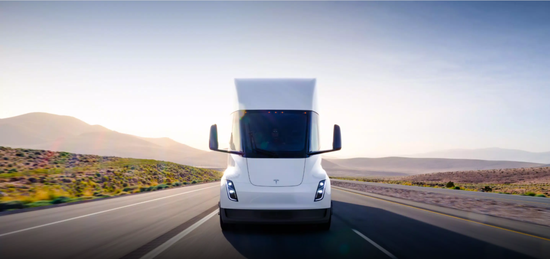 Source: Tesla official website
Source: Tesla official websiteThe popularity of new energy commercial trucks comes from the fact that it hits two pain points of enterprises: cost and carbon emissions, both of which are as low as possible.
The carbon emissions of heavy trucks are staggering. Taking China as an example, data from the China Association of Automobile Manufacturers shows that there are currently 40 million commercial vehicles in the country, accounting for 10.9% of the country's total vehicles. Nearly 65%, of which the carbon emission of heavy trucks accounts for as high as 83.5%, which is a veritable "carbon emission monster".
Governments around the world have the motivation to encourage the conversion of diesel heavy trucks to new energy heavy trucks through subsidies and policy constraints. According to the "Global Electric Vehicle Outlook 2022" report released by the International Energy Agency (IEA), the proportion of global electric heavy-duty trucks will reach 10% in 2030 and 25% in the IEA 2050 net-zero emission scenario. Accelerating the deployment of electric trucks will be necessary to keep pace with the goals pledged by governments.
Companies with transportation needs are also working towards zero carbon emissions, with companies including FedEx, UPS, USPS and Amazon all pledging to electrify their fleets.
The help of electric trucks to reduce costs for enterprises is more intuitive. When he debuted with the Semi in 2017, Musk gave his own calculations - based on 100,000 miles per year, each Semi can save customers $25,000 in costs, accounting for about 20% of the cost of a van. A rough estimate of cost savings-Walmart has 6,000 trucks a year. According to Musk, if all these trucks are replaced, Volvo can save $150 million a year.
C
Electric heavy trucks are a brand new market, which not only gives Tesla an opportunity to seize the market as soon as possible, but also means inevitable challenges.
The weight and cost of the battery is a big issue. According to previous estimates by the Financial Associated Press, in 2021, when the price of lithium carbonate has not yet taken off, based on 1,100 yuan per kilowatt-hour of electricity and 180 degrees of power consumption per 100 kilometers of heavy trucks, a battery of 1,440 kilowatt-hours of electricity is required to travel 800 kilometers. As high as 1.584 million yuan, which is obviously unrealistic. However, the weight and cost of batteries cannot be reduced, and the transportation distance of electric heavy trucks cannot be increased.
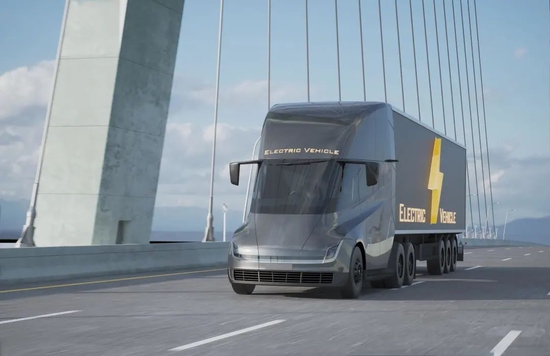 Source: Freepik
Source: FreepikIn March of this year, Daimler released its 2021 financial report, and the high cost of electric trucks has become a prominent problem. “If you count the engine, gearbox, axles, fuel tank system, cooling system, the cost will not exceed 25,000 euros, but how many batteries can you buy for 25,000 euros? Even if you count (the battery price drops to) 60 euros/kWh, And I need 400kWh, so I need 24,000 euros to spend on the battery," said Martin Daum, CEO of Daimler Trucks. The eActros series models of Daimler Trucks have a maximum battery capacity of 420kWh and a range of only 400 kilometers, which still has a gap in meeting the needs of long-distance transportation.
The reason why Semi has such a high degree of attention, in addition to the combination of autonomous driving and electric heavy trucks, is mainly because the key indicators it claims are very eye-catching: the version with 800 kilometers of cruising range is priced at $180,000. This price is still high, but combined with the cost issues mentioned above, Tesla's cost control is already a leader.
How "perverted" is the 800-kilometer battery life? One or two can be seen from Daimler's reaction.
In 2018, the year after Semi debuted, Daimler Trucks released a beta version of the e-Actros heavy-duty truck with a range of only 124 miles (200 kilometers). 11 hours to fully charge.
Regarding the Tesla Semi, Martin Daum directly expressed his doubts: "If Tesla really lives up to its promise, there is no doubt that we will buy two Tesla trucks, one to disassemble and analyze, and the other to be dissected. One for testing. If Tesla is really successful, we must have made a huge mistake. But for now, the same laws of physics apply in Germany and California..."
It is worth noting that in 2020, Musk said that the Semi will use 4680 batteries in the future, and the cruising range will reach 1,000 kilometers.
Bill Gates is also bad at electric heavy trucks. In a blog post in 2020, he said that long-distance travel in the future is more likely to be powered by alternative fuels such as biofuels, and the batteries are large and heavy. And aircraft, "electrification may never be a practical solution".
Musk dismissed it, responding to one fan on Twitter: "He (Bill Gates) doesn't know anything."

In fact, among new energy heavy trucks, electric vehicles are not the only solution. For example, the Nikola One jointly launched by Germany's Bosch and automaker Nikola is a hydrogen-fueled heavy truck that can output 1,000 horsepower and have a maximum range of 1,930 kilometers. The "battery swap" heavy truck, which is also very popular at the moment, is different from the charging mode of the Tesla Semi. The battery swapping heavy truck adopts the vehicle-electric separation mode, and the battery is replaced by an external swap station. The Ningde era has accelerated the process of battery swapping heavy trucks this year. Layout, in February, we worked with Sany Heavy Industry to promote the application of the demonstration project of battery swapping heavy trucks in Fujian Province. In August, we signed a contract with FAW Jiefang to set up a joint venture. One of the core businesses is to provide vehicle-electric separation services. In September, it was announced that the company's The MTE (Module Integrated Chassis) technology will be the first to be applied to the SPIC Qiyuanxin Power Heavy Truck Power Replacement Project.
Another highlight of Semi is the application of autonomous driving technology. “Unmanned heavy trucks” are a potential parallel world outside of new energy heavy trucks. cost, and in the future outlined by autonomous driving, the accident rate should be lower.
Tucson went public in the United States in April last year, becoming the world's first listed driverless truck company, which seems to indicate a bright future. However, just one year after its listing, Tucson fell into a whirlpool of losses, replaced 3 executives in one year, and sold its Chinese business, which also cast a shadow on the unmanned heavy-duty truck.
The Tesla Semi was previously photographed showing signs of damage to the test vehicle being towed away. It was speculated that control was lost during the uphill test, as gravel could be seen in front of the car.
The actual application scenarios of heavy trucks are far more complex and dangerous than city cars, and the commercialization of autonomous driving has a longer reality test period than the latter.
Tesla's Semi is indeed good enough from the perspective of paper data, but whether it can make a breakthrough in the field of new energy heavy trucks depends on the actual performance after delivery in December.
Previous:Best ever fiasco to smart anal beads? Chess looms over cheating suspicions
Next:Zuckerberg is making a classic Silicon Valley mistake: Meta became the Yahoo of 10 years ago
related articles
Article Comments (0)
- This article has not received comments yet, hurry up and grab the first frame~







